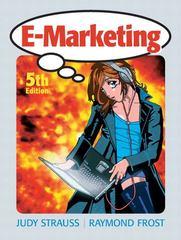Question
3.1: Use the neoclassical theory of distribution to predict the impact on the real wage and the real rental price of capital of each of
3.1: Use the neoclassical theory of distribution to predict the impact on the real wage
and the real rental price of capital of each of the following events:
A. A wave of immigration increases the labor force.
B. An earthquake destroys some of the capital stock.
C. A technological advance improves the production function.
3.2: If a 10-percent increase in both capital and labor causes output to increase by
less than 10 percent, the production function is said to exhibit decreasing returns to scale. If it causes output to increase by more than 10 percent, the production function is said to exhibit increasing returns to scale. Why might a production function exhibit increasing or decreasing returns to scale?
3.3: Suppose that an economy's production function is Cobb-Douglas with
parameter alpha=0.3. One way to solve B.-D., assume numerical values, e.g.: Assume A=1,
K=1, L0=1 and L1=1.1.
3.3A. What fractions of income do capital and labor receive?
3.3B. Suppose that immigration raises the labor force by 10 percent. What happens to total output (in percent)? The rental price of capital? The real wage?One way to solve B., assume A=1, K=1, L0=1 and L1=1.1.
3.3C. Suppose that a gift of capital from abroad raises the capital stock by 10 percent. What happens to total output (in percent)? The rental price of capital? The real wage?
3.3D. Suppose that a technological advance raises the value of the parameter A by 10 percent.
What happens to total output (in percent)? The rental price of capital? The real wage?
3.4.: Empirically the trend in the real wage closely tracks the trend in labor
productivity. Explain why?
3.5. A. Over the past century, the productivity of farmers has risen substantially
because of technological progress. According to the neoclassical theory, what should have
happened to their real wage? B. In what units is the real wage in part (a) measured? C. Over
the same period, the productivity of barbers has remained constant. What should have
happened to their real wage? D. In what units is the real wage in part (c) measured? E.
Suppose workers can move freely between farmers and being barbers. What does this
mobility imply for the wages of farmers and barbers? F. What your previous answers
imply for the price of haircuts relative to the price of food? G. Who benefits from
technological progress in farming - farmers or barbers?
3.6.: (Harder) Consider a Cobb-Douglas production function with three inputs. K is
capital (the number of machines), L is labor (the number of workers), and H is human capital
(the number of college degrees among the workers). The production function is:
1/ 3 1/ 3 1/3 Y K L H =
3.6A. Derive an expression for the marginal product of labor. How does an increase
in the amount of human capital affect the marginal product of labor?
3.6B. Derive an expression for the marginal product of human capital. How does an
increase in the amount of human capital affect the marginal product of human capital?r
Step by Step Solution
There are 3 Steps involved in it
Step: 1

Get Instant Access to Expert-Tailored Solutions
See step-by-step solutions with expert insights and AI powered tools for academic success
Step: 2

Step: 3

Ace Your Homework with AI
Get the answers you need in no time with our AI-driven, step-by-step assistance
Get Started


